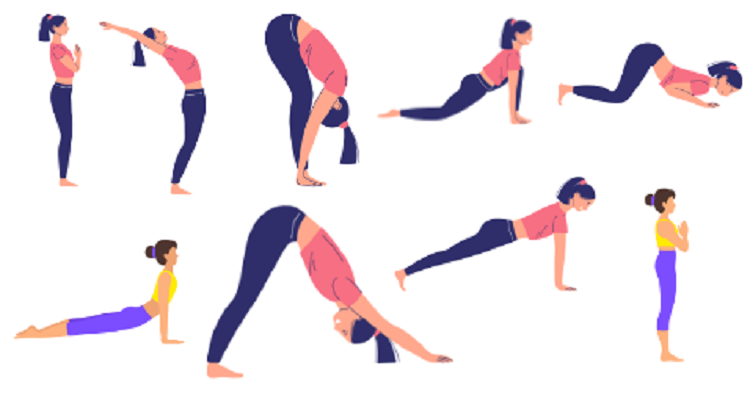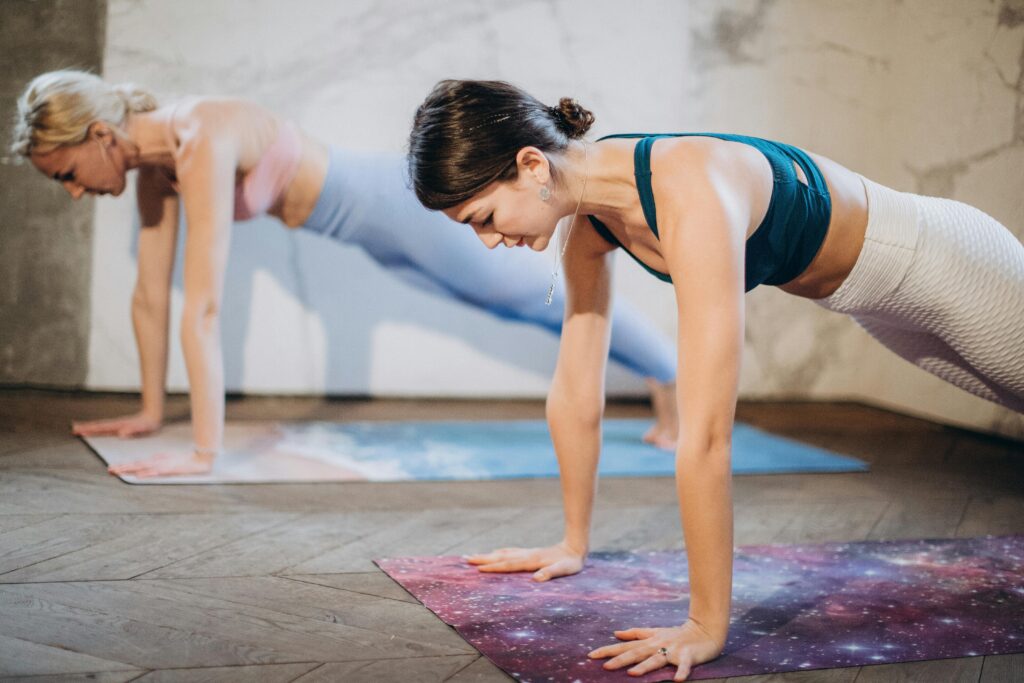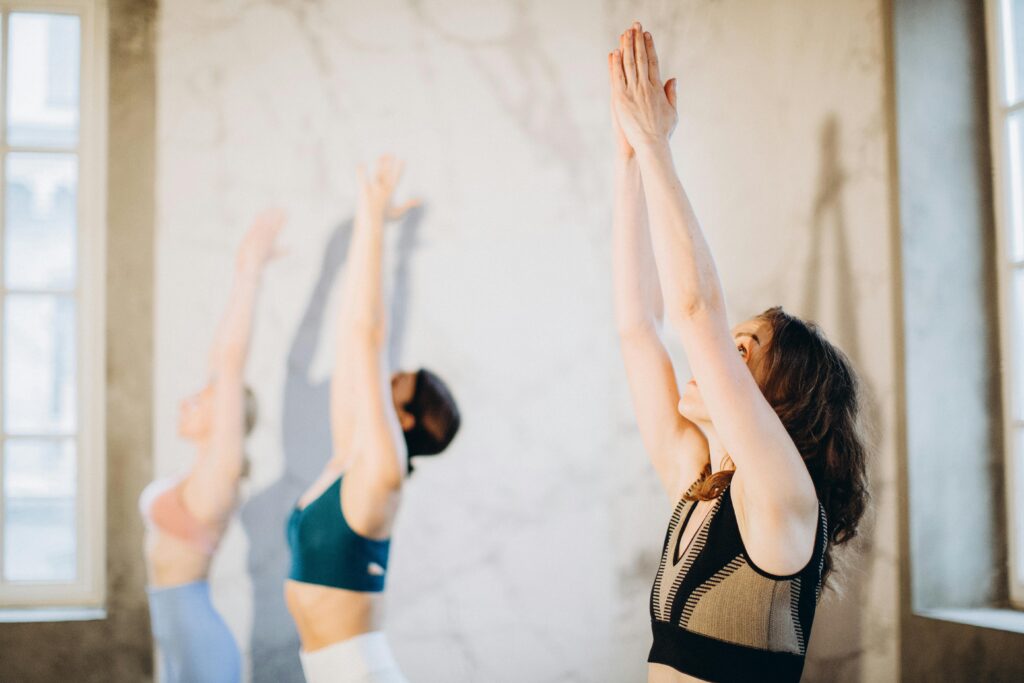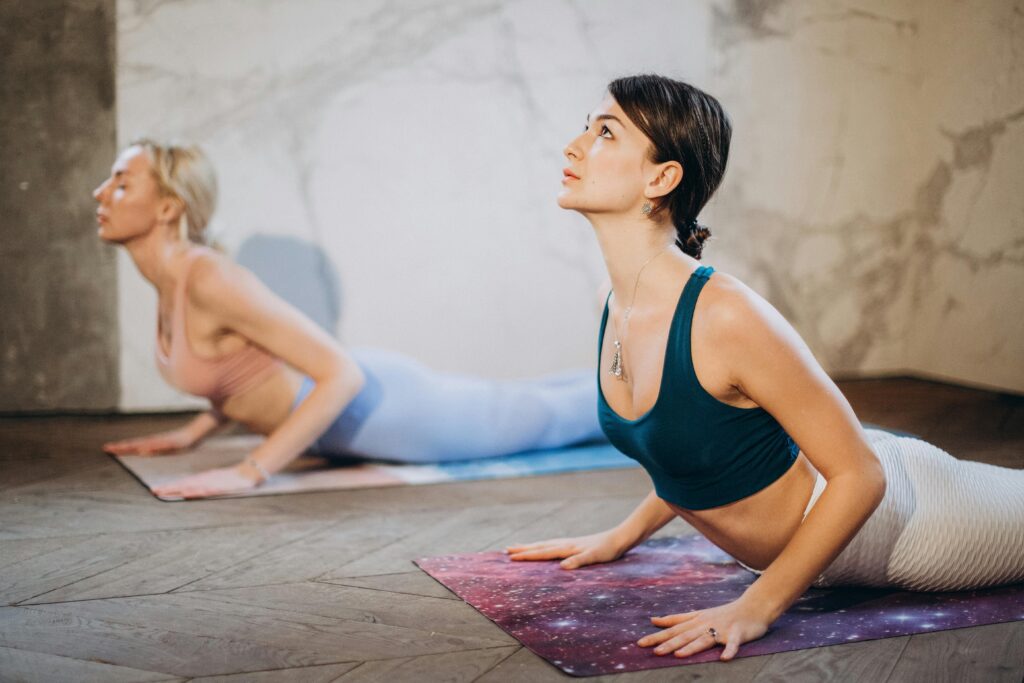
A series of twelve yoga poses known as Surya-namaskar, or Sun Salutation, has been practised in various forms for millennia in India. Honouring the sun, which is regarded as the source of all life and energy, is the purpose of the practice.
Table of Contents
ToggleAncient Texts & References of Surya-namskar:

- Rig Veda: One of Hinduism’s oldest sacred scriptures, the Rig Veda contains the earliest references to sun worship. It stresses the importance of the sun and the custom of making prayers to it, even though it does not explain the Surya Namaskar series of poses.
- Yajur Veda: This Veda also has songs devoted to the sun that emphasize the value of exercise and extending greetings to the sun.
- Patanjali’s Yoga Sutras: Although the literature primarily addresses the theory of yoga, Patanjali emphasizes the significance of asana (physical postures) and pranayama (breathing exercises), which are essential components of Surya Namaskar.
- Hatha Yoga Pradipika: This traditional Hatha Yoga manual offers explanations of the poses and sun salutations, which are a type of Hatha Yoga.
- Bhagavad Gita: The idea underlying the Surya Namaskar practice—performing it as an offering to the sun—is consistent with Lord Krishna’s advice to Arjuna in the Bhagavad Gita to carry out his tasks as a gift to the divine.
Health Benefits of Surya-namskar:

Numerous health advantages of Surya Namaskar include improved mental, emotional, and spiritual wellbeing:
- Physical Advantages:
- Promotes better posture and flexibility.
- Fortifies joints and muscles.
- Promotes better circulation, which benefits the cardiovascular system.
- Increases metabolism to aid in weight loss.
- Improves respiratory health and expands lung capacity.
- Mental Advantages:
- Encourages relaxation, which lowers tension and anxiety.
- Enhances concentration and focus.
- Improves cognitive function and mental clarity.
- Spiritual Advantages:
- Encourages thankfulness and a sense of oneness with the cosmos.
- Promotes alertness and mindfulness.
- Stabilizes the body’s chakras, or energy centers.
Method of Surya-namaskar:

There are twelve steps in the sequence, all of which are timed with breath control:
1. In the prayer pose, or Shavasana, place your feet together and your palms together in front of your chest. Let out a breath.
2. The Raised Arms Pose (Hasta Uttanasana): Take a breath, raise your arms high, and arch your back.
3. Bend forward, placing your hands next to your feet, and release the pose known as Padahastasana (Hand to Foot Pose).
4. Ashwa Sanchalanasana (Equestrian Pose): Take a breath, extend your right leg, and raise your head.
5. Stick Pose (Dandasana): Maintain a straight posture, hold your breath, and pull the left leg back.
6. Ashtanga Namaskara (Eight Parts or Eight Points): Breathe out, lowering your knees, chest, and chin to the ground.
7. Bhujangasana (Cobra Pose): Bend your elbows and take a deep breath. Lift your chest upward and forward.
8. Mountain Pose (Parvatasana): Exhale, then raise your tailbone and hips to create an inverted V.
9. Ashwa Sanchalanasana (Equestrian Pose): Take a breath, extend your right leg, and raise your head.
10. Padahastasana (Hand to Foot Pose): Bend down, extend the left leg, and release the air.
11. Assana (Raised Arms Pose): Take a breath, lift yourself up, and arch backwards.
12. Pranamasana (Prayer Pose): Lift your palms together in front of your chest after exhaling.
Precautions to be taken for Surya-namskar :

- Before beginning, see a doctor if you have any long-term medical issues.
- Steer clear when you’re pregnant or menstruating.
- Do not proceed if you are injured, especially if they are in the muscles, joints, or spine.
- Begin cautiously and increase the number of rounds over time.
- To prevent strain, keep your alignment correct.
Do's and Don'ts for Surya Namaskar:

Do’s:
- Execute while fasting.
- Warm up your body beforehand to get ready.
- For optimal outcomes, practice regularly.
- Align your breath with your motions.
- Pay attention to your body and modify the intensity as necessary.
- Conclude the exercise by meditating or relaxing.
Don’ts:
- Avoid exerting yourself excessively.
- Refrain from practicing quickly.
- If you are feeling ill, do not perform.
- Steer clear of abrupt or violent motions.
- Don’t omit the closing or preparation stages.
A complete workout that strengthens the body, mind, and soul is Surya Namaskar. It can be modified to accommodate varying levels of fitness and serves as a fundamental exercise in a yoga regimen.
